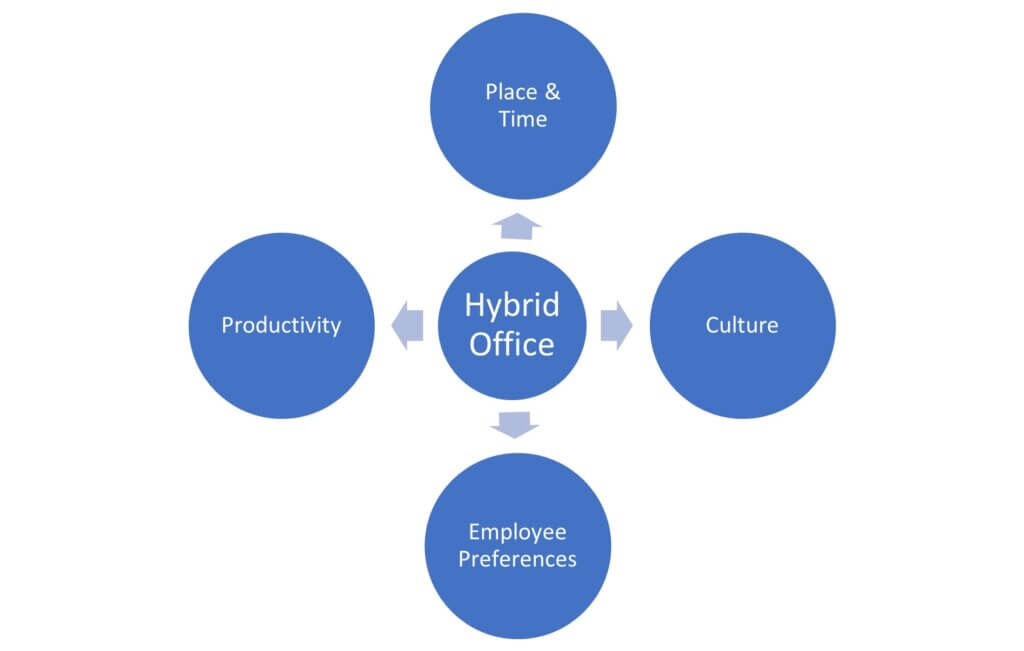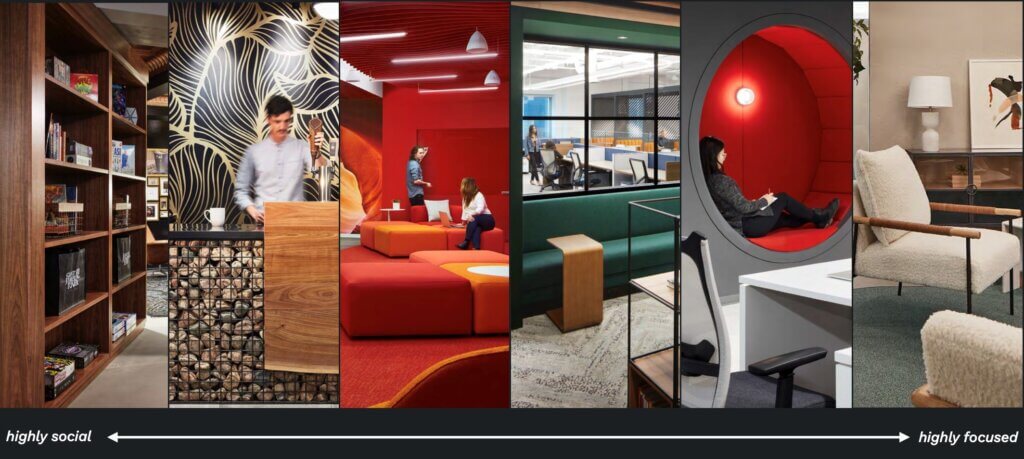Survey after survey makes clear that most office workers do not want to work from their employer’s office 5 days per week. COVID demonstrated that employees are just as productive working remotely. Those facing long commutes are very resistant to jumping back on the train or car for two plus hour round-trip commutes which they justifiably argue is a waste of productivity. Employers, however, see that there is value to having everyone together physically to enhance both innovation and employee bonding to build social capital, which is just as important as economic capital.
Microsoft published a study on 9/22/22 on the effectiveness of hybrid work after surveying 20,000 people in 11 countries and analyzing data points from Microsoft 365. Here is a link to that study: Hybrid Work is Just Work. Are We Doing It Wrong? The survey revealed a sharp divide between employees and business leaders on effectiveness of hybrid work. Eighty-seven percent (87%) of employees report feeling productive while 85% of leaders say they lack confidence in employee productivity – a new phenomenon known as Productivity Paranoia which has given rise to Productivity Theater as discussed in the recent Wall Street Journal Article: Your Boss Still Thinks You’re Faking It When You’re Working From Home. Return to office (RTO) has not resolved this divide. Seventy-three percent (73%) of employees say they need a good reason to return to the office. Authenticity matters. People want to be seen as valuable colleagues, not just “workers” or “employees”. They are seeking out relationships with coworkers and leadership that will help them grow; they don’t want to be seen as simply a means to achieve productivity. Rebuilding social capital is what employees are looking for to make the commute worthwhile. Eighty-four percent (84%) of employees surveyed would return to the office to socialize with co-workers and 85% would do so to build team bonds.
What Employees Are Saying: A project manager with 2 young children shared with me that when she chooses to spend her free time with colleagues, vendors, or other work-related people, she’s actively choosing to spend less time with her children and to miss valuable family time. When she makes that decision, she’s always asking herself if “this is an interaction worth the sacrifice of family”. Employees want to make the most of their time, not try to “spray and pray”, meaning you’re not trying to do everything hoping to get some return on your time investment, rather, know that what you’re choosing is beneficial to your career, your position, social bonding.
What Managers are Saying: A client recently mentioned to me that while they did very well during COVID with remote work, his gut tells him that they could have done better “if we were working physically together”.
In today’s tight labor market and facing economic headwinds, business leaders need a workspace that seamlessly enables both remote and in-person work to drive their business forward. geniant + Eastlake Studio’s Christina Brown has joined me on this post offering a framework to create a commute-worthy workplace experience.
First, as there is no one-size fits all approach, a solid foundation for a hybrid office rest upon a business leader’s full understanding of the needs of their workforce and customers. Here are some key questions that leaders should ask of their staff:
- What do you value most and least when working in-person?
- What do you value most and least when working remotely?
- When working remotely versus in the office, how often do you interact with your co-workers who are not part of your core team? What are those interactions like and do you feel that it’s quality time worth spending?
- What kind of tools do you not have that would better enable you to work remotely? This could be communication, ways to share tasks or ways to keep all team members accountable.
- How has remote work vs in-person work impacted our customers?
- What is the purpose of our office?
- Do you have a clear vision of where the company is heading in the future?
We recently helped a mutual client in relocating and creating a hybrid office space. Their former office was much larger and did not facilitate physical interaction. After our client surveyed its employees as to intended in-person office attendance, we were able to develop a space program and identify potential properties that met their objectives. Building amenities were a consideration for our client, as it is for many tenants today, to facilitate social bonding, including outdoor areas, fitness facilities, lounges, etc.
A successful hybrid concept should be built around these elements:

When planning a hybrid office, the floor plan should organize all the various tasks & activities that happen in the space on a spectrum ranging from highly social to highly focused. This is what geniant + Eastlake Studio has coined, the Flow™ office. Watch the video to learn more at www.geniant.com/flow

Design considerations that will allow for seamless workflow from remote work to in-person work:
- Increase in communal spaces
- Flexibility of work
- Open collaboration areas
- Team huddle areas
- Quiet areas – library – for focus work
- Flexible meeting areas to accommodate varying sized meetings
- Transforming the traditional board room style conference room into a more agile meeting space
- Furniture – move away from sea of cubes to more neighborhoods as no one wants to be the single person in a sea of empty desks
- Audio Visual Technology (i.e., enhanced conference rooms to support in-person and remote participants) is vital to seamlessly connect remote and in-office workers as well as to measure the effectiveness of workspace. Cybersecurity takes on increased importance
- Shared software tools that enable better internal and external communication
- More shared offices and workstations which requires enhanced reservation technology
- Hospitality touches
- Culture – reminders of the company’s legacy, history, and values in a way that feels genuine and not just a marketing tool
Mistakes to avoid when planning a hybrid office:
- Not listening to employees’ needs and objectives
- Not trusting employees and mandating attendance at certain dates/times
- Returning to old 9-5 routine
- Not enhancing office technology
- Management not embracing
- Not allowing teams to develop their own schedule for in-person office time

Don Wenig
Blackacre Advisors LLC
info@blackacreadvisors.com
312-345-4778
DISCLAIMER. Our writings are from a real estate transaction perspective and for informational purposes only. Nothing herein shall be considered legal, accounting, tax, or architectural advice. Please consult with the appropriate professional(s).

